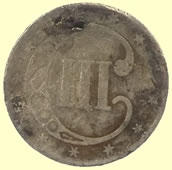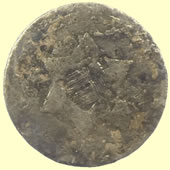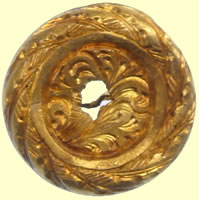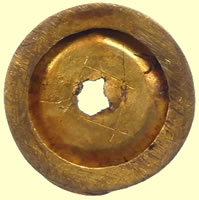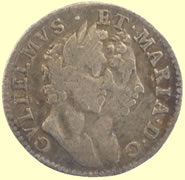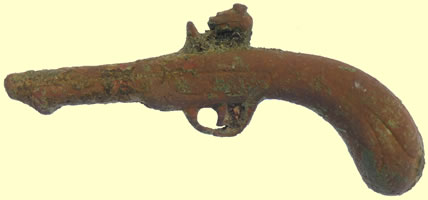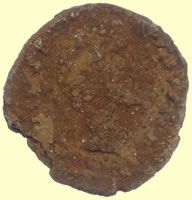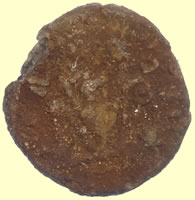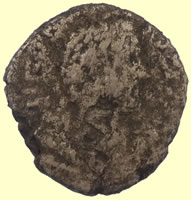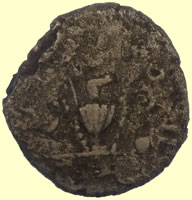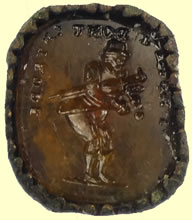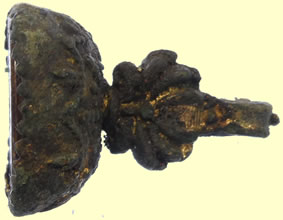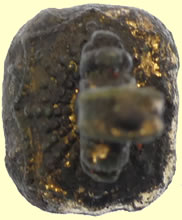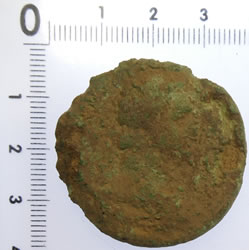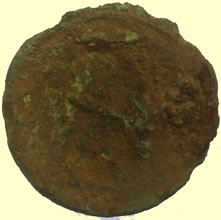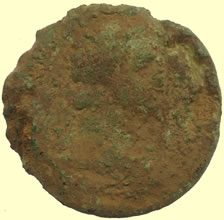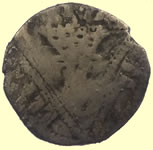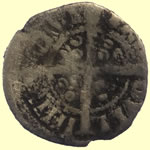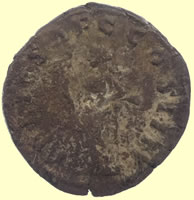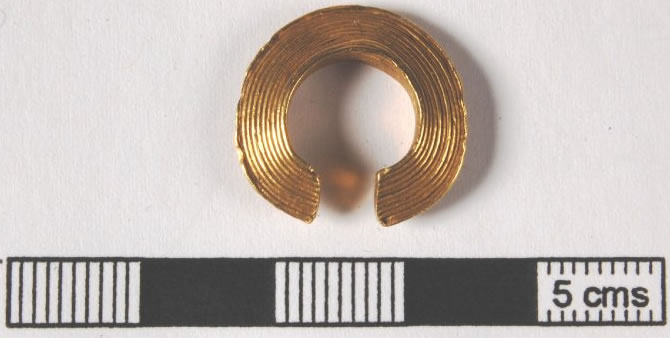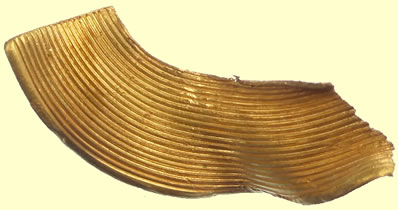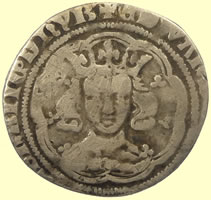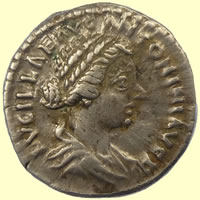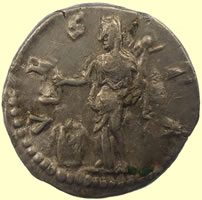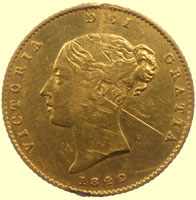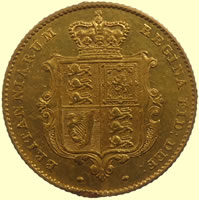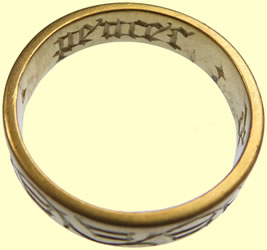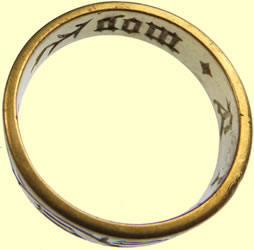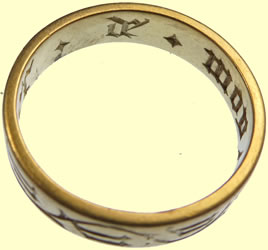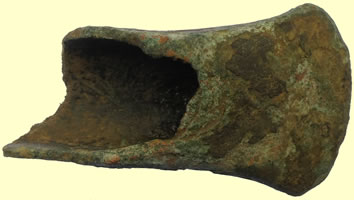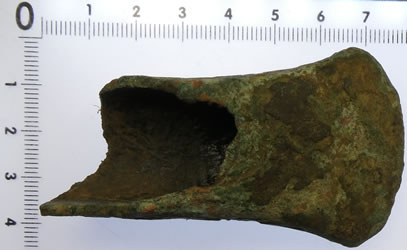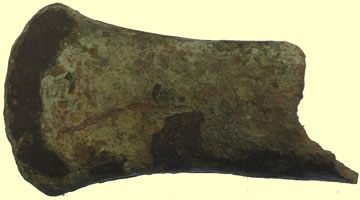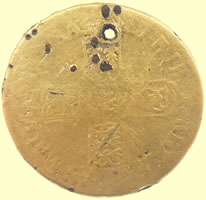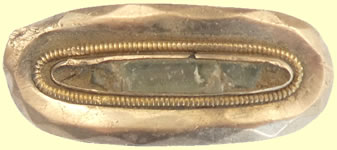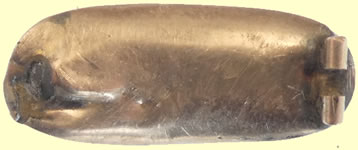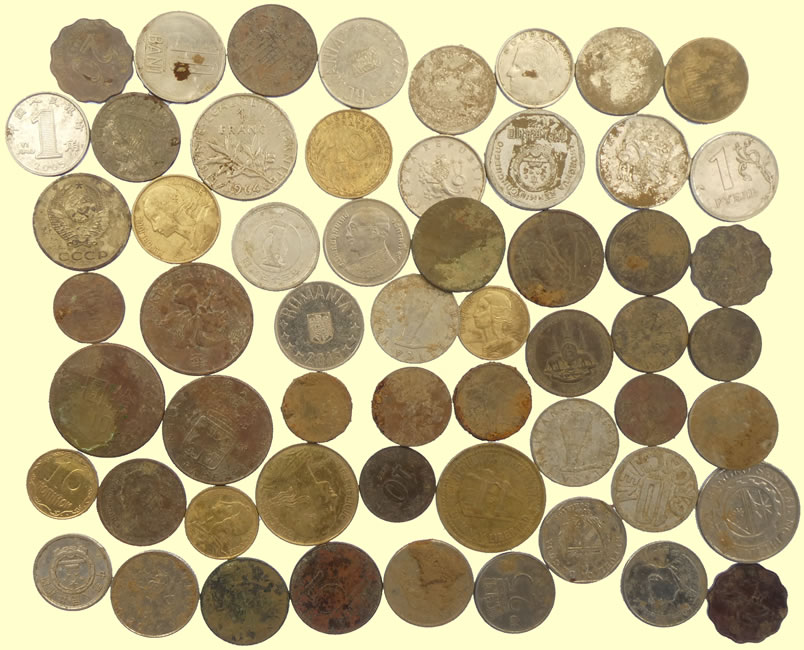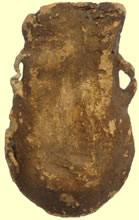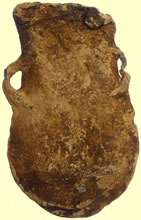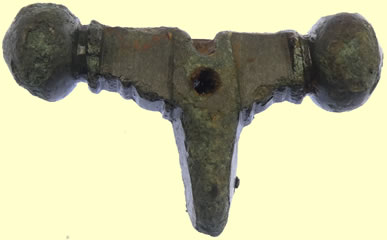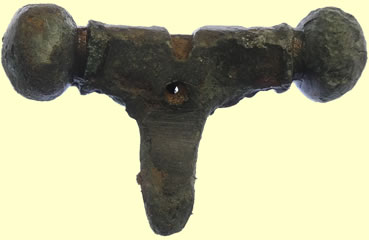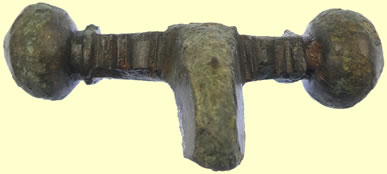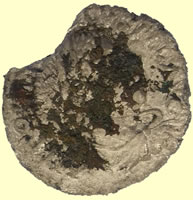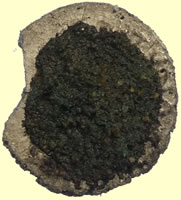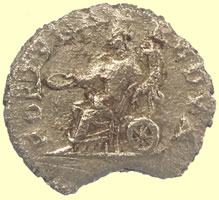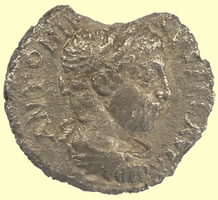

Metal detecting holidays in England with the World's most successful metal detecting club.
Twinned with Midwest Historical Research Society USA
2018 Sept Finds page |
 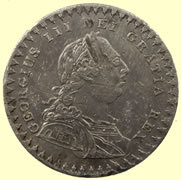 |
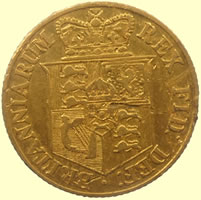  |
||||
| 1811 George III milled silver bank token - Eighteenpence | 1817 George III milled gold half sovereign 3.95g,19.44mm |
||||
Medieval gilded Fleur de Lis harness pendant |
|||||
 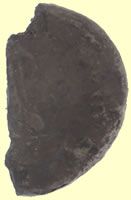 |
 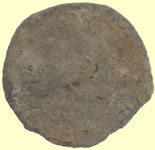 |
||||
| 2ndC Roman silver coin - need cooking to remove crust | 15thC lead token | ||||
Thought this was a Roman buckle but not sure it is - reserching this find |
|||||
1794 silver seal matrix Maker CF - Crispin Fuller - registered Dec 1792 London duty paid symbol - date letter small t |
|||||
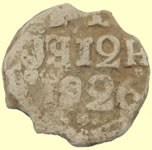 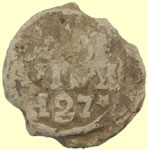 |
 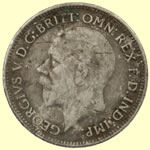 |
||||
| 1826 Russian lead bale seal | 1933 George V millled silver sixpence | ||||
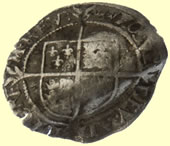 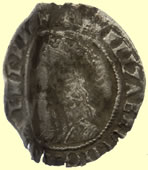 |
 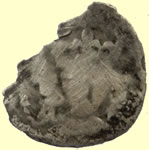 |
||||
| 1567 - 1570 Elizabeth 1st hammered silver three pence | Medieval hammered silver long cross penny | ||||
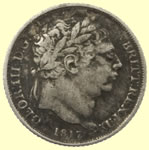 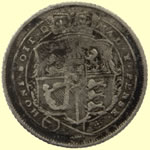 |
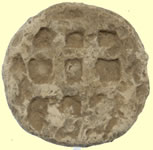 |
 |
|||
| 1817 George III milled silver sixpence | 17thC lead token | ||||
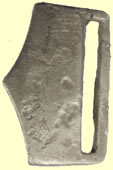 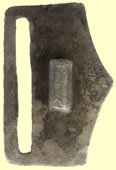 |
 |
 |
|||
| Victorian silver clasp | Crown C Army button ? | 1500-1700 mount | |||
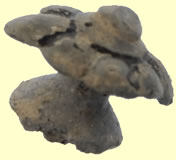 |
 |
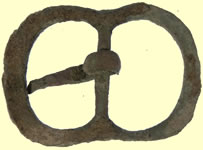 |
|||
| Georgian lead tacco jar lid handle | Post medieval harness pendant | 1500-1650 buckle | |||
 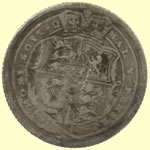 |
 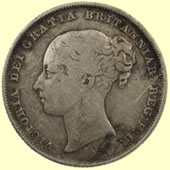 |
||||
| 1816 George III milled silver sixpence | 1841 Victoria milled silver shilling | ||||
 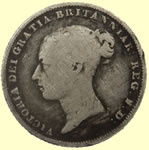 |
 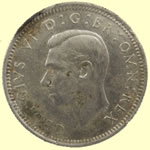 |
||||
| 1857 Victoria milled silver sixpence | 1944 George VI milled silver sixpence | ||||
 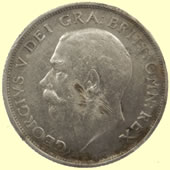 |
 |
||||
| 1919 George V milled silver shilling | Georgian silver button + glass stone | ||||
Georgian silver plated seal matrix - needs cleaning to remove crust |
|||||
 |
 |
 |
|||
| Georgian silver initialed spoon handle | 19thC livery button | 18thC Royal artillery button | |||
 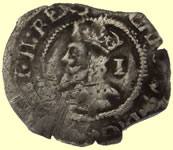 |
 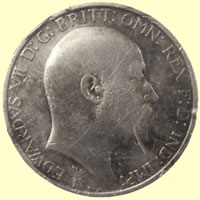 |
||||
| 1624 Chalres 1st hammered silver penny | 1902 Edward VII milled silver florin - 24 pence | ||||
 |
 |
 |
 |
||
| 19thC livery button | 1900's merchant navy button | Medieval lead trade weight | 1500-1650 buckle | ||
|
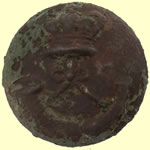 |
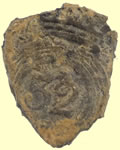 |
|||
| Georgian silver cuff link | Victorian Rifle Regiment button | c1790-1810 32nd Regiment of foot button The 32nd Regt of Foot gained the Cornwall title in 1782. This style had a long period of use by the Regt lasting until 1871 for other ranks and 1881 for officers. |
|||
  |
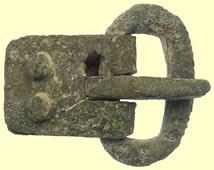 |
||||
| 1634 Charles 1st hammered copper rose farthing | Medieval buckle | ||||
 |
 |
 |
|||
| 1500-1650 buckle | Copper alloy belt mount. The mount is asymmetrical . The mount has a triangular body, with a collared lozenge shaped terminal at one end, and a circular terminal at the other. The surface is gilded. There are two incomplete integral lugs on the reverse. Date from: Circa AD 1350 |
A small cast copper alloy mount or stud, in the shape of a bird. The mount is a rough oval in shape, being the shape of a bird with wings folded away. The top forms the head, with a sharp beak pointing left; this resembles that of a crow, raven, magpie or other corvid. The decoration is basic, consisting of a crude ‘eye’ and horizontal lines on the body. The mount is convex in section, hollow at the reverse, with the stumps of two studs. This artefact dates to the 13th to 15th centuries. | |||
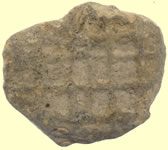 |
 |
 |
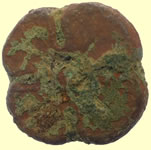 |
||
| 17thC lead token | Medieval buckle | Roman mount | A Medieval (1250-1450) sheet copper alloy (0.50mm thick) domed quadfoil belt mount | ||
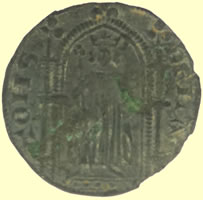 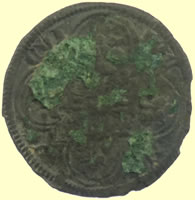 |
 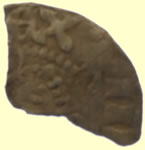 |
||||
The Standing King series Charles IV 1322-28 French Jetton Obv 'king with sceptre standing beneath a gothic canopy' |
1247 Henry III hammered silver voided long cross fragment Rev RIO - Moneyer Henri |
||||
  |
 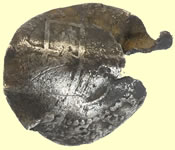 |
||||
17thC hammered copper trade farthin Ob IR |
16thC Elizabeth 1st hammered silver penny | ||||
2ndC Roman silver coin sent for ID This one is definitely Trajan as well – and I’ve cataloged about half a dozen of this type in the last couple weeks – Felicitas holding caduceus and cornucopiae. The photo below shows how similar it is, although the legends don’t match exactly – there was a whole series of “Felicitas standing” denarii, with altar, leaning on column, etc – this is the closest I have in saved photos
|
|||||
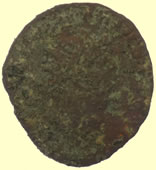 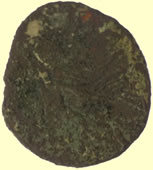 |
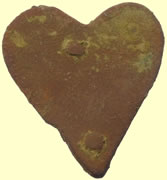 |
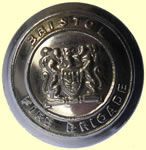 |
|||
| Mid 4th C Roman copper coin | 1500-1700 mount | Britstol Fire Brigade | |||
2ndC Roman silver coin sent for ID This is a denarius of Trajan, so far as I can tell. At first glance I was not immediately familiar with the reverse type (odd, since I’ve been helping catalog an enormous Trajan specialty collection over the last couple of months, but then Trajan had a lot of types and I thought I hadn’t encountered this one before.) |
|||||
  |
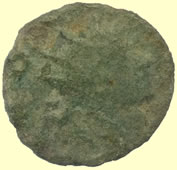 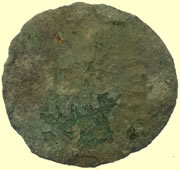 |
||||
| 1819 Russian lead bale seal | Mid 4thC Roman barbarious radiate bronze coin | ||||
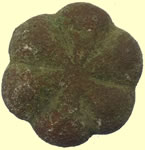 |
 |
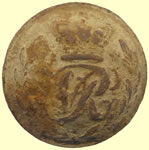 |
|||
| A Medieval (1250-1450) sheet copper alloy (0.50mm thick) domed sexfoil belt mount | Cast copper alloy mount of probable late medieval or post medieval date (1400-1600). The mount is sub-oval in plan and domed in cross section (D-shaped). The front face is convex and undecorated | 19thC Victorian Engineers button | |||
1640's Civil War half pound cannon ball - 7.8oz,39mm |
|||||
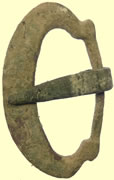 |
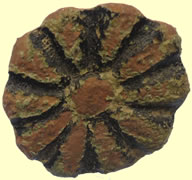 |
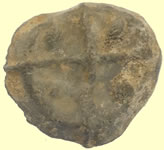 |
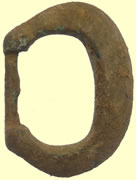 |
||
| Medieval buckle | Roman mount | 15thC lead token | Medieval buckle | ||
 |
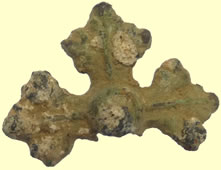 |
  |
|||
| 18thC clog fastener | Medieval mount | 1874 Victoria milled silver shilling | |||
 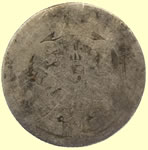 |
  |
||||
| 1819 George III milled silver sixpence | 1836 William IV milled silver four pence | ||||
|
|||||
| 11,000 BC flint scraper | |||||
 |
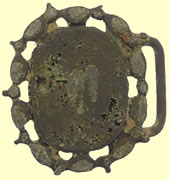 |
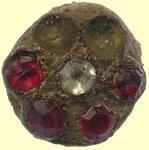  |
|||
A copper-alloy cast mount. The mount is quatrefoil in shape with a cusp in each angle. The reverse has two attachment lugs. c 1600-1700 |
Victorian brooch clasp | Georgian mount with glass stones | |||
1412-13 Henry IV hammered gold qtr Nobel- Light coinage - Lis above shield, trefoils beside shield,Lis in centre of reverse. Obv +hENRIC'DI; GRA;REX ANGL - mm Fleur de Lis 1.80g,18mm
1422- 27 Henry VI hammered silver groat - Annulet issue - Annulets by neck and two sets of oppossing pellets on reverse Obv + hENRIC'x DI GRAx REX ANGLIE Z FRANC Rev VIL LAx CALI SIEx - Calais mint 3.73g,26mm |
|||||
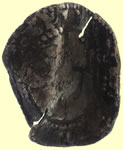  |
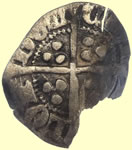 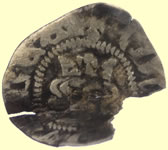 |
||||
| 16thC Elizabeth 1st hammered silver penny | 1314-17 Edward 1st hammered silver half penny - Type 13a Obv + EDWA**DVS***A Rev CIVI/TAS/LON/DON- London mint |
||||
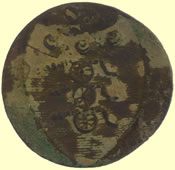 |
 |
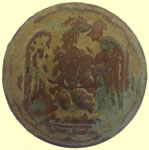 |
|||
| 18thC Royal Artillery button | 1500-1700 mount | 1839-1849 87th Regiment of Foot The Essex Regiment button |
|||
  |
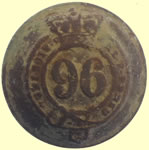 |
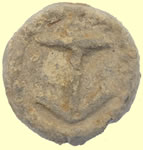 |
|||
| Post medieval lead bale seal | 1855 - 1881 - 96th (Queen's Own Germans) Regiment of Foot 1824 96th Regiment of Foot |
17thC lead token | |||
 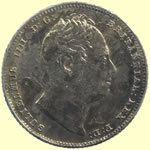 |
  |
||||
| 1834 William IV milled silver sixpence | 1925 George V milled silver sixpence | ||||
'Eastern uninscribed gold quarter stater of Dubnovellaunos, c 20 BC-AD 10. Van Arsdell VA1660 =BMC 2442. 12mm,1.28g- sent for recording on PAS |
|||||
17thC Charles II silver button - reported as treasure to musuem |
|||||
 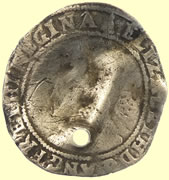 |
 |
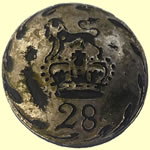 |
|||
| 1582 Elizabeth 1st hammered silver sixpence - bell mint mark | Georgian button | c1800-1820 THE 28th REGIMENT OF FOOT. The 28th became the North Gloucestershire Regt of Foot in 1782. |
|||
2ndC Roman fibular brroch |
|||||
 |
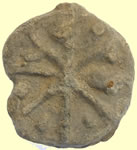 |
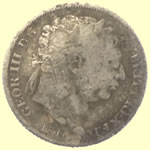  |
|||
| Royal Navy - Officers (Roped Rim) Unlined Background 23mm - 1891-1901 | 15thC lead token | 1816 George III milled silver sixpence | |||
 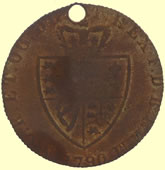 |
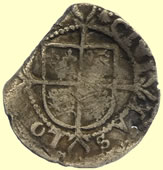 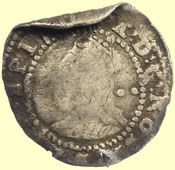 |
||||
| 1790 George III gold half guinea gaming token | 1584 - 1586 Elizabeth 1st hammered silver half groat - Escallop mint mark | ||||
 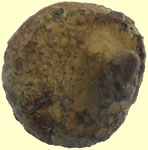 |
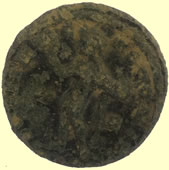 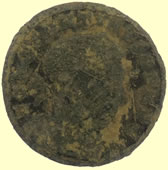 |
||||
| 16thC Tudor button | 4thC Roman bronze sent for ID Working backwards from the date stamps, this is the most recent piece you sent and I think I might not have gotten around to telling you what it is. By “normal 4th century size” I’m assuming you mean the range of ~17-21mm ? |
||||
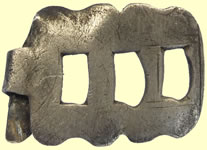 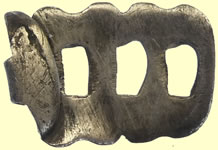 |
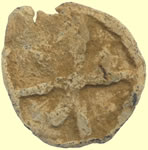 |
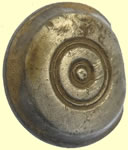 |
|||
| 18thC silver clog fastener | 15thC lead token | Georgian silver button | |||
Large skull and cross bones mount |
|||||
 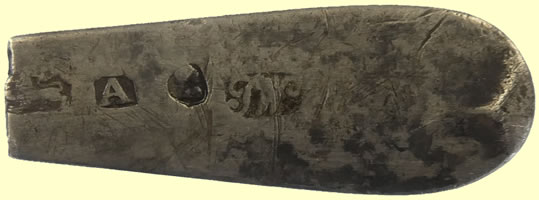 |
|||||
1796 decorated and initialed 'EL'spoon handle - Maker TW
(registered Jan 1780) |
|||||
  |
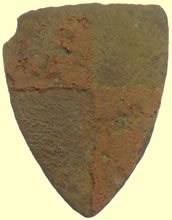  |
||||
| 1930 George V milled silver florin (24 pence) | Medieval heraldic enameled harness pendant | ||||
Medieval trade weight |
|||||
850 BC Bronze age socketed axe hean |
|||||
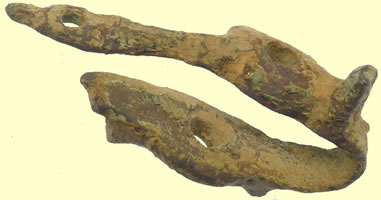 |
 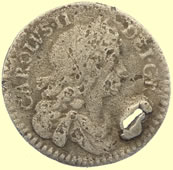 |
||||
| Medieval gilded bar mount | 1679 Charles II milled silver tow pence | ||||
Using an ultrasonic cleaner to remove crud stuck to coin 25 BC Celtic gold qtr stater, reported to museum Dubnovellaunus tribe Celtic gold qtr stater-11.0mm,1.35g Linear wreath, with opposed crescents; Horse left with branch below and trefoil design above |
|||||
 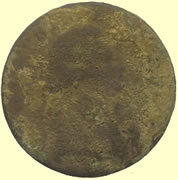 |
 |
||||
| 1794 half penny copper Condor token | 1804-1820 79th Regiment of foot button 79 enclosed within strap, crowned with CAMERONIAN VOLUNTEERS above. An officers example to the 79th who were first the 79th Royal Liverpool Volunteers between 1778-1784, then Cameron Highlanders 1804-73 and Queen's Own Cameron Highlanders 1873-1881. |
||||
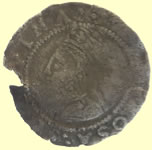 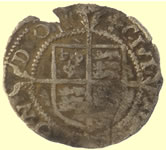 |
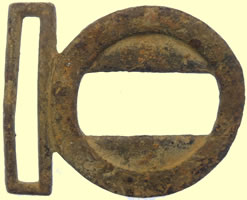 |
||||
| 1560 - 1561 Elizabeth 1st hammered silver penny - Cross Crosslet mint mark | Victorian Army belt buckle | ||||
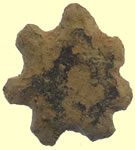 |
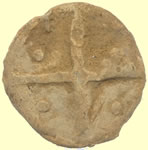 |
 |
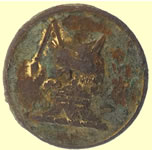 |
||
| Medieval mount | 15thC lead token | 1500-1700 mount | 19thC livery button | ||
1842 Victoria milled gold half sovereign |
|||||
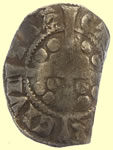  |
 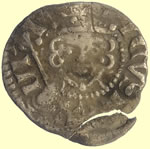 |
||||
1279 Edward 1st hammered silver penny Obv +EDWAR ANGL DNS hYB Rev CIVI/TAS/CAN/TOR - Canterbury mint
|
1247 Henry III hammered silver voided long cross penny - Class 5b Obv + hENRICVS REX III Rev ION/ONC/CAN/TER- Moneyer ION of Canterbury mint |
||||
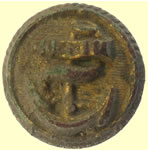 |
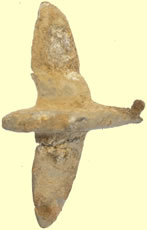 |
 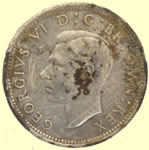 |
|||
| Britain's Merchant Navy Generic Design Issue In use 1900 's onwards |
Lead Spitfire toy | 1946 George VI milled silver sixpence | |||
 |
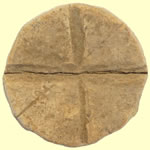 |
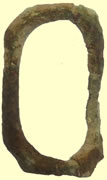 |
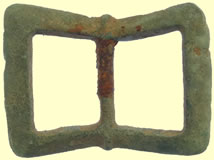 |
||
| Georgian button | 15thC lead token | Medieval buckle | 1500-1650 buckle | ||
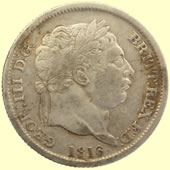 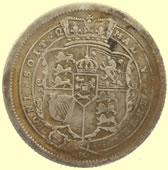 |
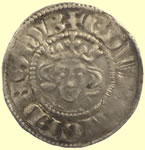 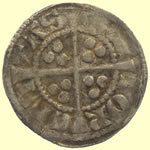 |
||||
| 1816 George III milled silver shilling | 1280 Edward 1st hammered silver penny - type 3b - 3cd crown Obv +EDWAR ANGL DNS hYB Rev CIVI/TASCAN/TOR - Canterbury mint |
||||
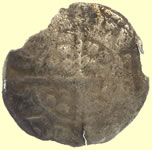 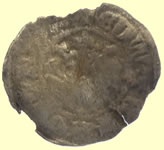 |
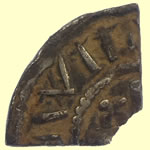 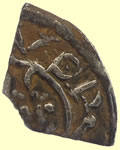 |
||||
1279 Edward 1st hammered silver penny - Closed E Obv EDWAR ANGL*** Rev DVR/ - Durham mint |
1216 Henry III hammered silver farthing WILL - Moneyer Willem |
||||
10-40 AD Cunobelin Celtic gold stater - Linear type -sent to PAS for recording VA1925 BMC 1772-83 16mm,5.37g |
|||||
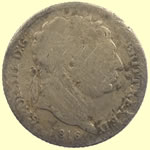  |
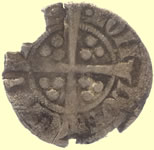  |
||||
| 1816 George III milled silver sixpence | 1282-89 Edward 1st hammered silver penny Egg wasted S, pellet before LON - Class4c Obv + EDW** DNS hYB Rev CIVI/TAS/.LON/DON |
||||
  |
 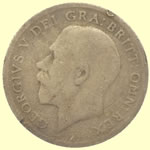 |
||||
| 1625 Charles 1st hammered silver penny | 1922 George V milled silver sixpence | ||||
  |
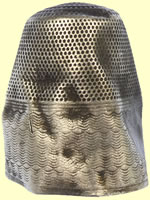 |
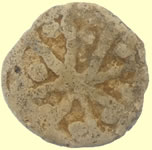 |
|||
| 1820 George III milled silver sixpence | Victorian silver thimble | 15thC lead token | |||
 |
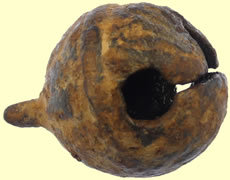 |
||||
| 18thC toy cannon | 17thC crotal bell | ||||
Medieval badges Ref Mitchiner p244 939 - 941
|
|||||
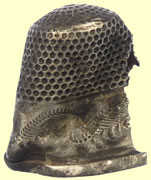 |
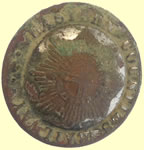 |
 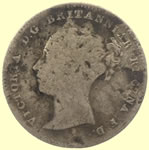 |
|||
| 19thC silver thimble | Eastern Counties Railway button The Eastern Counties Railway was an English railway company incorporated in 1836 intended to link London with Ipswich via Colchester, and then extend to Norwich and Yarmouth. |
1858 Victoria milled silver three pence | |||
USA silver 3 cent The three-cent silver, also known as the three-cent piece in silver or trime, was struck by the Mint of the United States for circulation from 1851 to 1872, and as a proof coin in 1873. Designed by the Mint's chief engraver, James B. Longacre, it circulated well while other silver coinage was being hoarded and melted, but once that problem was addressed, became less used. It was abolished by Congress with the Coinage Act of 1873. |
|||||
 |
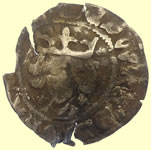 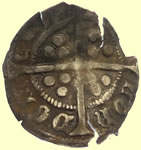 |
||||
| Georgian watch winders |
1464-1470 Edward IV hammered silver penny Class VIII, Quatrefoil by neck- mm Crown Obv EDWARD DI GRA REX ANGL Rev CIVI/TAS/LON/DON |
||||
Post medieval gold stud - reported to museum 0.50g, 10mm |
|||||
  |
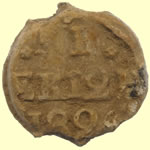  |
||||
1216 Henry III hammered silver short cross half penny- Class 6 Rev NT+TO- Moneyer Tomas of Canterbury mint |
Post medeival lead bale seal | ||||
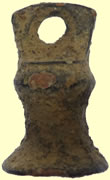 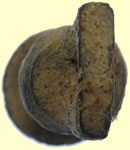 |
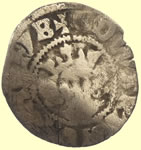 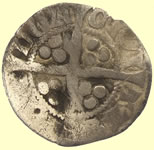 |
||||
| Georgian bell trade weight | 1279 Edward 1st hammered silver penny Obv EDWAR ANGL DNS hYB Rev CIVI/TAS/LON/DON |
||||
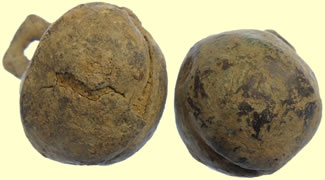 |
 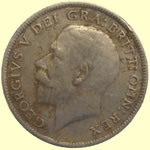 |
||||
| 18thC crotal bells | 1916 George V milled silver sixpence | ||||
 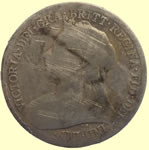 |
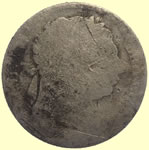  |
||||
| 1901 Victoria milled silver sixpence | 1816 George III milled silver sixpence | ||||
Very rare 1689 William and Mary maundy milled silver four epnce |
|||||
  |
 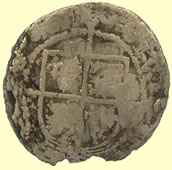 |
||||
| 1853 Victoria milled silver shilling | 16thC Elizabeth 1st hammered silver half groat | ||||
Really neat 18thC solid copper toy flint lock pistol |
|||||
2ndC Roman silver coin - needs 'cooking' to remove crust Antoninus Pius, 138-161 AD. AR denarius, Mint of Rome, |
|||||
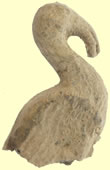 |
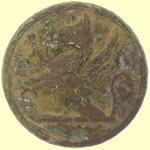 |
 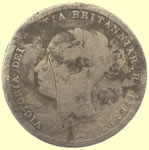 |
|||
| Lead bird | 19thC livery button | 1885 Victoria milled silver sixpence | |||
Georgian fob seal matrix |
|||||
Biggest Roman bronze I have ever seen dug 36mm dia,4mm T,16.34g I’m afraid I can only give you some generalities about this piece. It’s a sestertius, but you probably knew that. I’m afraid the reverse is so far gone I can’t even tell what the orientation is supposed to be, but a standing deity or personification would be a predictable common reverse type if, as it might be, that linear feature in the middle is the remains of a standing figure device.. http://www.stoa.org/gallery/album94/ML17_Faustina_II_Diana_Lucina_sest?full=1
|
|||||
Irish 1272-1307 Edward 1st hammered silver farthing Dublin mint 0.40g,10mm |
|||||
Roman silver hoard coin addendum No36 - reported to museum 2.81g,17mm That seems to be from the earlier range of the coins in the hoard I helped you with ID’s on last year. This is a common type and one which is repeated in several consecutive years later in his reign. You are lucky to have nearly 100% legible legends here as it might have been a bit more involved guesswork to figure out what was happening on the reverse if the legend were not so clear. Unfortunately I have no prepared photos of my own of anything even particularly similar for comparison’s sake – but this is from acsearch: https://www.acsearch.info/search.html?id=2007687 |
|||||
Bronze Age Tress Ring C1000BC Lock-RingsOrnaments, whose function is unknown, made from gold plates in triangular cross-section and secured by a binding strip, resulting in a hollow ring. The face plates can be decorated with repoussé decoration or with fine concentric incised lines imitating fine wire works. More rarely, lock-rings are made from face plates obtained from individual gold wires soldered together. References
3.12g,27.07mm long
|
|||||
 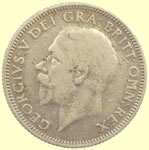 |
  |
||||
| 1935 George V milled silver sixpence | 1216 Henry III milled silver short cross halfpenny | ||||
 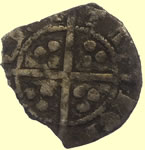 |
  |
||||
| 1377-1399 Richard II hammered silver half penny | 1625 Charles 1st hammered silver half groat | ||||
Silver bracelet ?- sent to museum as possible treasure |
|||||
1356 -61 Edward III hammered silver groat - 4th issue Pre Treaty period - Cross 3, Series G Top arches not fleured - annulet stops -pot hook N - Closed C and E Obv EDWAR***** FRANC D HYB Rev POSVI DEVM ADIVTORE MEVM (outer) Rev CIVI/TAS/LOII/DOII - London mint |
|||||
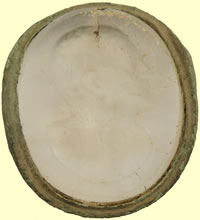 |
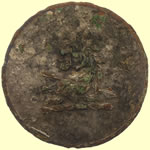 |
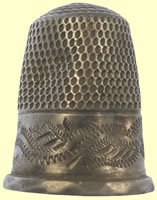 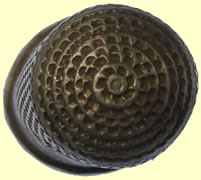 |
|||
| Georgian fob seal - mans bust facing right | 19thC livery button | Georgian silver thimble | |||
Medieval gilded bar mount |
|||||
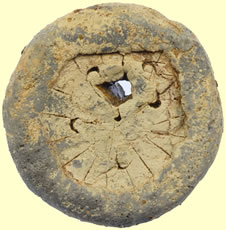 |
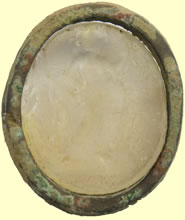 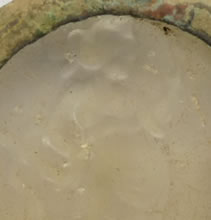 |
||||
| Medieval lead trade weight | Georgian fob seal - lady standing facing right | ||||
Mint Roman silver hoard coin addendum No37 - reported to museum 3.23, 17mm Super Lucilla – that’s the way you’d like to see them come out of the ground, no doubt. This one’s so nice I don’t need to scare-up a photo of a decent specimen – this photo does the job! |
|||||
1842 Victorian milled gold half sovereign |
|||||
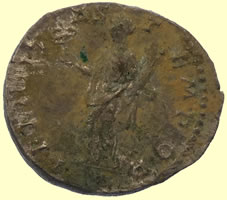 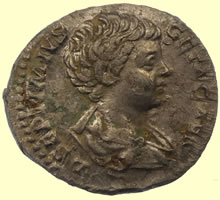 |
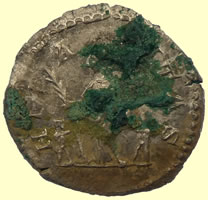  |
||||
Roman silver hoard coin addendum No38 - reported to museum Hoard 38 – 2.87g, 18mm
Geta, Caesar, 198-209. AR denarius, Mint of Rome 203 AD
|
Roman silver hoard coin addendum No39 - reported to museum Hoard 39 -3.06g, 20mm Julia Domna (W. of Sept. Severus) 193-217, AR denarius, Mint of Rome, 208 AD. |
||||
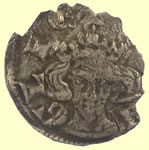 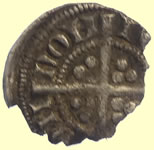 |
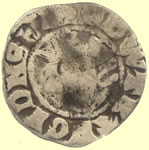 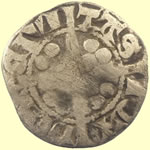 |
||||
Sterling silver issue 1279 Edward 1st hammered silver farthing- no inner circle on New reverse legend type - Class 20a Obv +ER AN GL AII Rev CIVI/TAS/LON/DON - London mint |
1279 Edward 1st hammered silver penny Obv +EDWAR ANGL DNS hYB Rev CIVI/TAS/LON/DON - London mint |
||||
 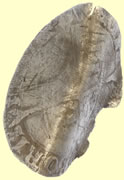 |
 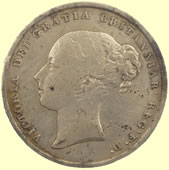 |
||||
| 1553-4 Queen Mary hammered silver groat (4 pence) | 1844 Victoria milled silver shilling | ||||
  |
 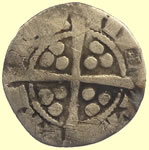 |
||||
1247 Henry III hammered silver voided half penny Rev V/NDE - London mint |
1279 Edward 1st hammered silver penny - initial mark in reverse legend Obv +EDWA**** hYB Durham mint |
||||
 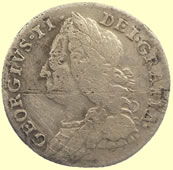 |
 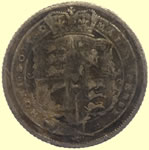 |
||||
| 1758 George II milled sixpence | 1818 George III milled silver sixpence | ||||
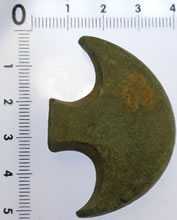 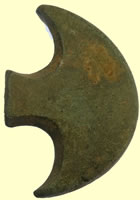 |
 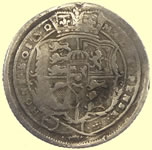 |
||||
Roman plain copper alloy pelta-shaped mount. It is semi-circular Broad period: ROMAN Date from: AD 40 |
1816 George III milled silver sixpence | ||||
 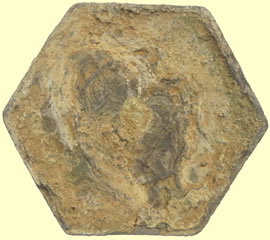 |
|||||
| Unusual relic - 1941 George VI milled silver coin recessed in amount | |||||
 |
 |
 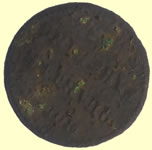 |
|||
| 16thC Clothing fastener | 1500-1700 mount | 1848 Victorian 'Model Eight farthing' 0.29g, 8.4mm | |||
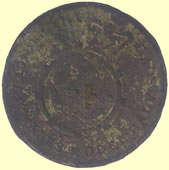 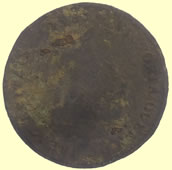 |
|||||
C1851 The Prince of Wales model half sovereign token Queen Victoria |
|||||
Stunning medeival gold ring - decorated outer band - full inner inscription in Lombardic script Pencer De Moy ? Working on deciphering lettering 3.77g.19mm dia Note "I found this expression, 'pencez de moy', which means 'think of me', engraved in a 14th century French ring at the National Museum in Stockholm. It is a precious gift to have someone thinking of you." - Efva Attling
|
|||||
850 BC Bronze age socketed axe head |
|||||
17thC William III gold guinea period forgery. one of the best milled gold forgeries I have seen 25mm dia - 5.86g Right diameter - wrong weight
|
|||||
Georgian gold brooch |
|||||
 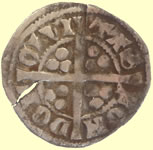 |
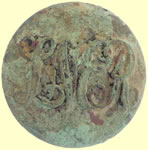 |
||||
1279 Edward 1st hammered silver penny Obv +EDWAR ANGL DNS hYB Rev CIVI/TAS/LON/DON - London mint |
London and North Eastern Railways button | ||||
Florida dug this huge hoard of 60 modern foreign coin from a dozen + different countries- someone lost a coin collection ? Austria, Philipines, Polish, Chinese, Janpanese, French, Swedish, Argentina, Russia etc
|
|||||
Pilgrim ampullae - holly water bottle made of lead 12th to 15thC, These ampoule were brought from pilgrimage places as a souvenir Mitchiner suggests that many ampullae were used in the annual springtime ’Blessing the Fields’ ceremony, in which the Holy Water they contained was sprinkled on the ground to give prayer for a good harvest. Having served this purpose, Mitchiner suggests that the ampullae were discarded. Others have suggested that the ampullae were buried along with their contents for a similar purpose.
|
|||||
Huge 3rd-4th C Roman crossbow brooch |
|||||
Crusty Roman silver coin - 'cooking' to remove crust Cleaned up mint - sent for ID
|
|||||
 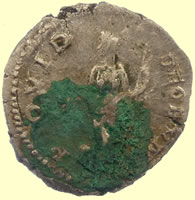 |
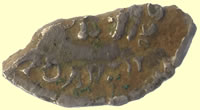  |
||||
Roman silver hoard coin addendum No40 - reported to museum 3.17g, 19mm Geta, Caesar, 198-209, silver denarius, Mint of Rome, 206 AD. |
Roman silver hoard coin addendum No41 - reported to museum 0.73g,13mm |
||||
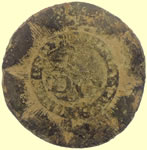 |
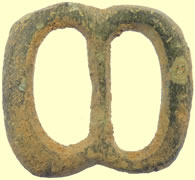 |
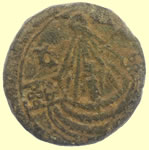 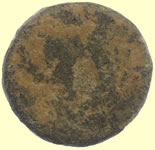 |
|||
| 19thC Kings dragoon guards button | 1500-1650 buckle | 15thC Noble coin weight -not in Withers ref book - h by mast probably indicating Henry VII - these coin weights started in 1471 | |||
Previous Feb 2018 Finds pagePrevious March 2018 Finds pagePrevious April 2018 Finds pageNext Oct 2018 Finds page |
 |





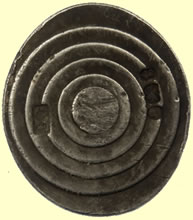
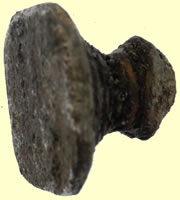
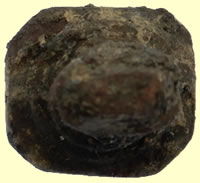
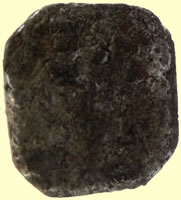
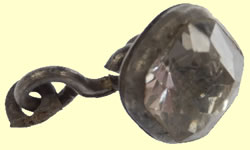
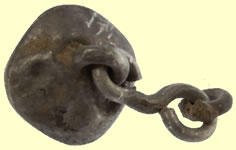
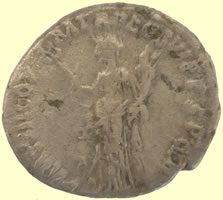
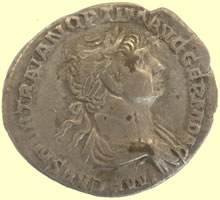
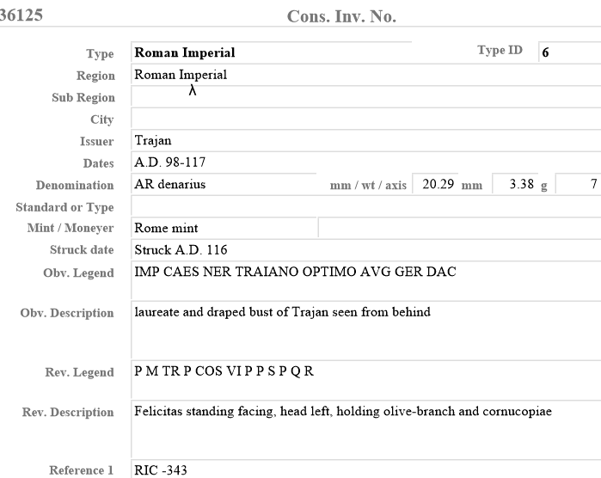

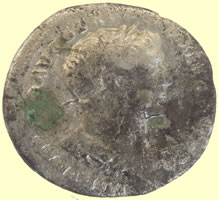
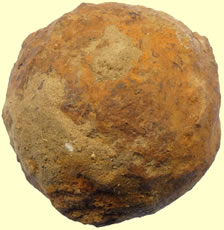
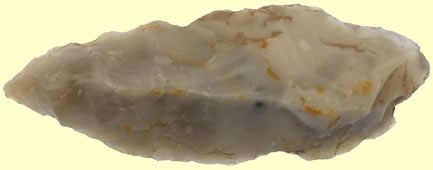

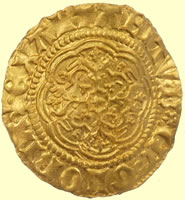
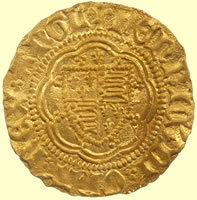
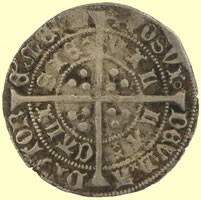
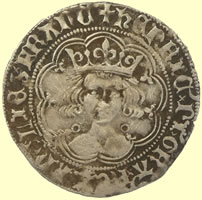
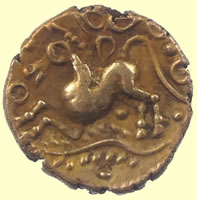
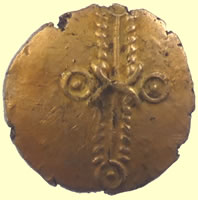
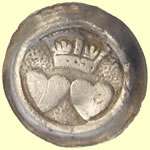
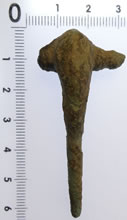



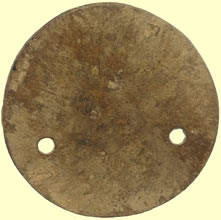
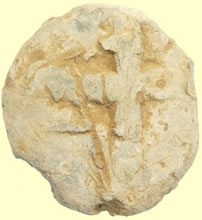
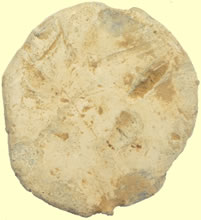
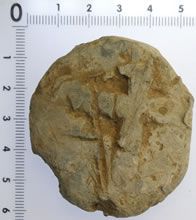
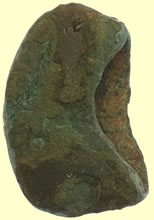
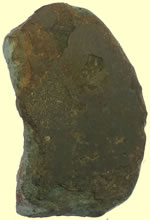


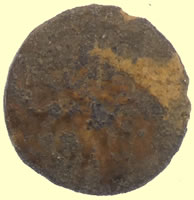
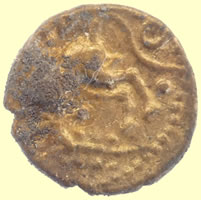
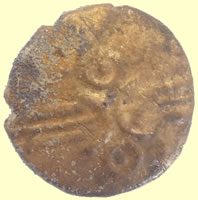
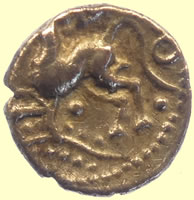
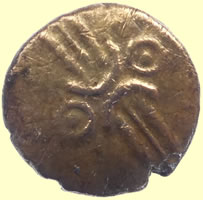

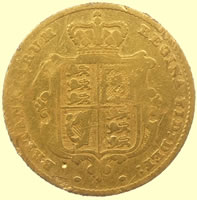

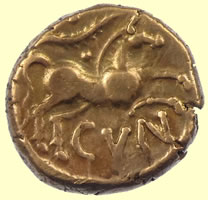
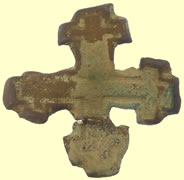
 'A badge for a Knight of the Order of the Holy Sepulchre in bronze and dating somewhere around C13/14th possibly very slightly later . This is a very scarce item and it relates to The Equestrian Order of the Holy Sepulchre of Jerusalem being a Catholic chivalric order of Knighthood that traces its roots to Godfrey of Bouillon, principal leader of the First Crusade. According to reliable sources in the Vatican and Jerusalem, it began in historical reality as a mixed clerical and lay confraternity (association) of pilgrims which gradually grew around the most central of the Christian holy places in the Middle East, the Holy Sepulchre or the tomb of Jesus Christ.This would have been a pin for a member of the order , there is a mark on the reverse where the original pin would have been fixed '
'A badge for a Knight of the Order of the Holy Sepulchre in bronze and dating somewhere around C13/14th possibly very slightly later . This is a very scarce item and it relates to The Equestrian Order of the Holy Sepulchre of Jerusalem being a Catholic chivalric order of Knighthood that traces its roots to Godfrey of Bouillon, principal leader of the First Crusade. According to reliable sources in the Vatican and Jerusalem, it began in historical reality as a mixed clerical and lay confraternity (association) of pilgrims which gradually grew around the most central of the Christian holy places in the Middle East, the Holy Sepulchre or the tomb of Jesus Christ.This would have been a pin for a member of the order , there is a mark on the reverse where the original pin would have been fixed '